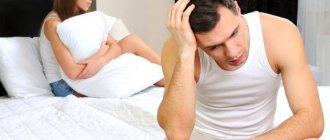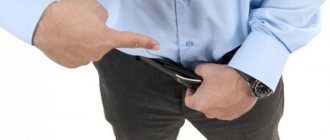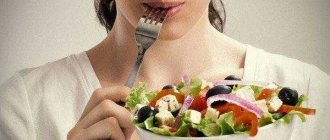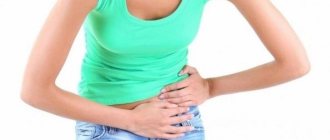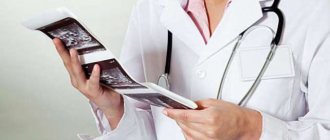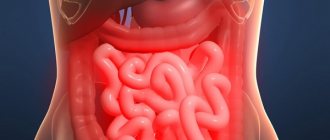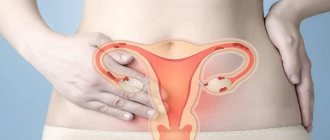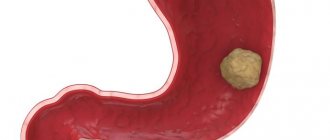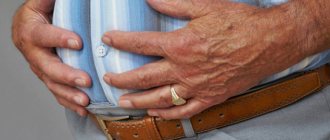Why the lower abdomen feels tight and the lower back hurts - this is a very common problem that many have encountered. Unfortunately, there is no clear, unambiguous answer to this question, since pain in the lower back is different in itself, and is directly related to problems of the whole body, and not to any separate part of it.
The lumbar region is a kind of canvas on which all human diseases appear. People often mean sciatica by lower back pain. But this opinion is erroneous; it is impossible to confirm this with a hundred percent guarantee. The first on the list of possible diseases is osteochondrosis. Osteochondrosis appears due to the destruction of the cartilage tissue of the discs, called intervertebral discs.
The next common disease associated with lower back pain is scoliosis, a curvature of the spine. And also different forms of osteoporosis, osteoarthritis, and hernia are added to this list. Hernias that cause a lot of pain and discomfort are usually treated with surgery.
The most complex disease of the lumbar region is considered to be ankylosing spondylitis - ankylosing spondylitis. This is inflammation of the intervertebral joints. Inflammation leads to their gradual fusion. Further, the spine becomes as if pinched, as if it were in some kind of case, because of which its movements are limited, while pain and stiffness are felt, and we are no longer talking about normal human life.
Also, painful sensations in the lower abdomen may indicate that there is some kind of problem with the internal organs. These include various chronic diseases and inflammatory processes. It is worth taking this condition seriously, as it can even lead to ruptures of internal organs in the event of some kind of injury. This requires immediate medical attention.
Not only women, but also men are susceptible to pain in the lower abdomen. Let's look at both cases in more detail.
What is diarrhea?
The combination of diarrhea and lower back pain in most cases is characteristic of the following pathologies:
- acute appendicitis;
- intestinal infection;
- exacerbation of peptic ulcer of the stomach and duodenum;
- pancreatitis and others.
It is also possible that diarrhea and lower back pain may occur in acute diseases of the kidneys and urinary tract, for example, in renal colic.
This pain is considered the most common. It is recognized by its temporal frequency, as it usually appears at certain times of the day or during allergy-risk seasons: spring or autumn. Constant pain is chronic in nature and gives the patient a feeling of discomfort in a certain part of the abdominal cavity. This type of colic requires adherence to a diet and diet. It requires increased attention during exacerbation of diseases.
Frequent complaints from patients are abdominal pain and diarrhea. They are incomparable to ordinary pain, and everyone has experienced them.
Only by fully studying the inherent symptoms, and why the stomach hurts and the diarrhea does not go away, can an accurate diagnosis be made.
Localization of pain
To determine the exact location that is causing the pain, your doctor may have you lie down and gently feel your abdomen. Often the pain is localized in the place where the affected organ is located.
Pregnancy is a period when a woman’s body is completely rebuilt to meet the needs of a small, growing person. This is always accompanied by some signs, and they are not always pleasant.
But the appearance of pain is frightening, especially if it is pain in places around the growing uterus, for example, in the lower back.
Such pain may be associated with the action of special hormones that prepare bones and ligaments for changes in intra-abdominal volumes, but may also indicate other diseases not related to pregnancy.
Pain in the lower abdomen in women
Physiologically, the female body is designed in such a way that from time to time a woman experiences nagging pain in the lower abdomen, pain in the lumbar region. There are many reasons for this. For example, pain is often associated with regular menstruation, pregnancy, inflammation of the urinary tract and bladder, in the presence of a cyst, or even worse if tumor formations appear.
If such pain begins to bother a woman, she should seek help from a gynecologist and undergo a thorough examination.
Painful, aching, or pulling sensations may also be present when the female reproductive organs have any abnormalities in the structure. For example, this could be a bend of the cervix, etc.
Causes
Spasmodic colic and diarrhea
The causes of pain in the lower back accompanied by nausea include a large number of diseases. The lower back is closely connected with the musculoskeletal system, and is located next to many pelvic organs. In some situations, pain from neighboring internal systems radiates to the lower back when walking or exercising. The following list will help you understand the variety of pathologies accompanied by these symptoms.
Diseases of the urinary system:
- Cystitis.
- Pyelonephritis.
- Renal colic.
- Nephroptosis.
- Acute nephritis.
- Urethritis.
Among women:
- Uterine fibroids.
- Premenstrual syndrome.
- Pregnancy.
- Endometriosis.
For men:
- Prostatitis.
- Gonorrhea.
- Mycoplasmosis.
As can be seen from the above list, the range of diseases that are accompanied by lower back pain and nausea is very wide. The next section discusses only some of the most common diseases.
Pain is a very important symptom. The patient’s ability to understand and describe its features helps the specialist to create the most accurate anamnesis.
By reading this article to the end, you will prepare for a conversation with a doctor, and at the same time clarify something useful for yourself. You can even take a notebook to write down terms that describe your case.
Why does my stomach hurt: looking for “hot spots”
First, let's determine the place where the “hot spot” of your body is located. This is the easiest way.
Unpleasant sensations just below the ribs may indicate not only damage to the inlet of the stomach, but also pathological changes in the esophagus and liver damage (hepatitis, cirrhosis).
In the right half of the upper abdomen, cholecystitis “hurts” and cholelithiasis manifests itself.
In the area from the top of the abdomen to the navel, discomfort is possible, caused by various types of pangastritis, and sometimes by intestinal pathologies.
Etiology
Content
The main symptoms of influenza are an increase in body temperature above 37 degrees, general weakness, and possibly even nausea or vomiting. But some patients also complain of lower back pain, which gets worse when coughing.
If you are not being treated for a disease in a hospital, then you should definitely tell your doctor about your symptoms. The fact is that the flu causes a lot of complications, among which pneumonia and the formation of lung abscesses are especially important.
They are the ones that can cause pain in the lumbar region when coughing. It is better to exclude the possibility of developing these diseases, or begin immediate treatment (and they will use not only painkillers and antivirals, but also antibiotics).
- Pyelonephritis.
- Muscle injuries.
One of the most dangerous inflammatory kidney diseases. It all starts with a sharp rise in temperature above 37. Plus, you begin to feel nausea, it can even lead to vomiting. In addition, your lower back begins to hurt a lot. Moreover, most often pain is observed only on one side.
The pain is dull, aching, its intensity can vary (it can intensify with coughing and sneezing). And don’t be fooled by the absence of problems with urination, with this disease they are not at all obligatory and cannot be considered a defining symptom.
At the first manifestations, you should call an ambulance or consult your doctor. Ignoring the symptoms can lead to the development of chronic pyelonephritis, which means that, at best, such attacks will be repeated with enviable regularity.
But in the worst case, it can lead to the development of suppurative processes (abscesses, carbuncles). Moreover, if the situation worsens, the temperature will begin to jump sharply from 37 to 40 degrees.
Kidneys affected by pyelonephritis
The most common scenario is a strain in the back muscles when performing physical activity (in the gym, at home or in the garden). As a rule, there is nothing dangerous in such a situation, and it is enough for the victim to ensure complete rest and the absence of any stress.
When damaged, the pain can be anything - dull, aching or sharp, cutting. Most often this happens during lifting weights, after being in a draft or during an unsuccessful sudden movement. Sometimes the pain can get worse during times of stress.
To make you feel better, you can use pain-relieving ointments or injections. It is much worse if, along with lower back pain, you begin to notice an increase in temperature to 37 degrees. It is insignificant, but, nevertheless, indicates the development of an inflammatory process in the body. In this case, you should avoid using warming ointments so as not to aggravate the situation.
Lower back pain and bloating: causes
When pain and cramps appear in the abdomen, many women begin to worry about inflammation of the reproductive system as the most likely cause. However, this phenomenon may be a consequence not only of the physiology of the female body, the ovulation period or the anatomical structure, but also of other factors that do not depend on the patient’s gender: diseases, developmental abnormalities, dysfunction, etc. Here are just some of the potential explanations for pain:
- Failure of functions of the gastrointestinal tract, genitourinary system;
- Innervation dysfunction caused by compression in the lumbar spine;
- Systemic diseases - Crohn's disease, biliary cirrhosis, Behçet's disease, Sjögren's syndrome, lupus, etc.;
- Increased gas formation, flatulence, dyspepsia;
- Hypertonicity of the abdominal muscles due to training or for another reason.
In women, the causes of pain symptoms in the lower peritoneum, if they have a clear or diffuse localization, often appear due to physiological factors or causes of organic origin. The first includes spasms due to the expansion of fermentation gases pressing on the intestinal walls. A factor in the occurrence of pain of a physiological nature in the lower abdomen is increased tone of the muscles and ligaments of the abdominal region due to the enlargement of the uterus during pregnancy.
Other organic disorders:
- Diseases of the internal female organs - endometriotic growths, fibroids, cysts, apoplexy, tumors, apoplexy or torsion of the ovary or fallopian tube, etc.;
- Pathologies during pregnancy - ectopic gestation, spontaneous abortion, placental abruption, recovery period after abortive termination of pregnancy or other surgical interventions;
- The uterine device and problems with its use (encapsulation and ingrowth into the endometrial layer, expiration of the device’s use, inflammation, etc.);
- Diseases of the genitourinary and digestive system of a chronic nature;
- Acute conditions requiring urgent medical intervention (appendicitis, peritonitis, strangulated hernia, intestinal necrosis).
The nature of the pain may be:
- Dagger;
- cutting;
- Similar to labor pains;
- Dumb;
- Point;
- No specific localization;
- Pulling.
What are the characteristics of pain with the symptoms described above?
Many people are sure that the inflamed appendix only hurts on the right side, but this is not true. The pain can hit the lower back, the lower part of the peritoneum with localization near the pubis, the inner surface of the leg, or have a “spreading” or encircling character. Its intensity varies from debilitating dull pain to sharp burning pain. The key symptom of appendicitis is fever and vomiting that rises over a short period of time.
For food intoxication and intestinal infections
Pain is felt in the lower epigastrium, with greater impact in the lower intestines. A woman feels a frequent painful urge to defecate, while the act of defecation itself does not bring tangible relief. Dehydration may quickly develop.
For infections of the kidneys, urinary tract and bladder
Sharp cutting pain accompanied by difficulty breathing. Severe cramps are observed in the lower abdomen. Bloody clots are observed in the urine. When a stone passes through the ureters, a woman feels severe pain, against the background of which a hypertensive crisis and pain shock can develop. If no measures are taken to eliminate the pain symptom, the situation can develop into a life-threatening situation.
Pathologically increased growth of endometrial cells produces nagging pain, which is more pronounced during menstruation and during PMS. Depending on the stage of the disease and the location of the enlarged endometrium, pain manifests itself in the groin, near the pubis, in the lower back, on the sides of the navel. Often a woman feels tingling in the labia minora and majora, as well as a burning sensation on the skin of the inner thighs.
When a mature follicle ruptures during ovulation, damaged vessels cause hemorrhage into the abdominal cavity. Apoplexy develops against the background of increased physical activity (lifting heavy weights, hitting the abdomen) or intense sexual intercourse. In this case, the woman feels severe pain (10 on a ten-point scale), accompanied by a sharp drop in pressure, loss of consciousness and, in some cases, a pre-comatose state. The situation requires immediate surgical intervention.
A dull, nagging pain of a constant nature. If the fibroid node is rejected, severe cramping and vaginal bleeding may occur.
With torsion of an ovarian cyst
When a woman has an ovarian cyst, there is a possibility of developing the so-called torsion of the formation during physical activity. If the blood supply to the ovary is stopped, tissue necrosis may occur, leading to severe pain shock, nausea and general intoxication of the body. Emergency surgical intervention is recommended.
For ectopic pregnancy
Ovarian gestation or pregnancy developing outside the uterus makes itself known with a dull aching pain that radiates to the lower back. If the embryo develops over a long period of time, the ovary or fallopian tube may rupture, leading to internal bleeding and severe cramping pain and stinging.
During pregnancy, a woman may experience abdominal pain for a number of reasons:
- In the first trimester, pain can be a symptom of a developing miscarriage, ectopic gestation, as well as other causes of miscarriage;
- Another reason is an increase in the tone of the walls of the uterus due to the organ’s adaptation to the growth of the developing fetus;
- The middle and last trimesters are accompanied by pain in the lower abdomen caused by stress on the ligaments and musculoskeletal system. Calcium deficiency may also be the cause;
- If during pregnancy a woman suddenly feels a sharp pain manifested in the lower part of the peritoneum, this may be a symptom of placental abruption. At the last stage of gestation, training contractions appear. In any case, a painful symptom requires consultation with a doctor observing the pregnancy.
This term refers to painful menstruation, which has a different basis, ranging from irregular structure and abnormal development of organs of the reproductive system to increased excitability of the nervous system.
For pain in the middle of the menstrual cycle
These pains usually accompany the release of a mature egg from the ovary at the time of ovulation. If a woman feels very unwell, she is recommended to take antispasmodic drugs.
For pain after sexual intercourse
The appearance of such symptoms during orgasm may be caused by increased blood flow due to sexual arousal. If the pain is too severe, this may be a sign of existing diseases of the reproductive system (see above). Also, during sexual intercourse, traumatic damage to the tissues of a woman’s external and internal genital organs is not uncommon.
With bloating caused by gas accumulations, the pain is as follows:
- Feeling of pressure on the walls of the intestines and abdomen;
- Sensation of an air lump in the epigastrium;
- Intestinal colic.
Types of abdominal pain caused by poor diet
The main reason why a person suffers from pain in the peritoneum or diarrhea is a violation of the rules of a healthy diet. The nature of colic helps to determine which product caused the patient to feel worse.
Squeezing abdominal pain and diarrhea
Such pain in the abdomen, when the abdomen presses and hurts, indicates improper functioning of the esophagus, inflammation, ulcer or hernia in it. Since the walls of the esophagus are hypersensitive to cold and hot temperatures and their frequent changes, eating food at a certain temperature can provoke irritation of the esophagus.
Pain during pregnancy
Often, expectant mothers have pain in their stomach and lower back. If you experience such symptoms, you should definitely consult a doctor. It can be caused by completely harmless reasons. But sometimes it signals serious pathologies.
Doctors identify the most common sources of discomfort:
- Dangerous pathologies. They usually appear in the early stages. The presence of pain may indicate a threat of miscarriage or ectopic pregnancy. In some cases, discomfort is associated with premature placental abruption.
- Intestinal diseases. The growth of the fetus puts pressure on the internal organs. In this regard, a woman may encounter a variety of intestinal diseases.
- Natural reasons. At the final stage of pregnancy, such discomfort indicates the approach of labor. Pain often occurs during false contractions.
If a pregnant woman experiences discomfort, it is imperative to inform the doctor or call an ambulance. After all, not only the life of a woman, but also the fate of an unborn baby may be at stake.
Treatment of abdominal pain and diarrhea in adults and children
In itself, stool disorder, in other words, diarrhea, is an unpleasant symptom that indicates problems in the gastrointestinal tract, but if it is also accompanied by pain and fever, then the cause is most likely more serious than banal poisoning.
Diarrhea can be caused by many factors, let's draw a parallel between symptoms and diseases.
Inflammation of the pancreas is often diagnosed in people who abuse fatty foods and alcoholic beverages. The first symptoms of pancreatitis in a woman may appear when she is pregnant. Pathology attacks a person, regardless of his age.
Why does pathology develop?
The main cause of inflammation of the pancreas is the development of pathologies of the duodenum and gall bladder. For many women, painful symptoms appear against the background of an infectious disease.
Gastroenterologists also identify the following reasons for the development of this disease:
- Allergic reactions.
- Pancreatic injuries.
- Complication after surgery.
- Progression of diabetes mellitus.
- Frequent stress.
- Development of atherosclerosis.
- Genetic predisposition.
- Development of hypertension.
The reasons may be associated with taking sulfonamides, tetracycline, Lasix, thiazide diuretics, Metronidazole.
Reason No. 2. Calculous cholecystitis
Calculous cholecystitis is the formation of calculi (stones) in the cavity of the gallbladder, which leads to inflammation of its walls.
Why does my back hurt?
Discomfort and unpleasant sensations are also associated with the structural features of the nervous system. Pain with cholecystitis can be dull aching or severe cramping. Sometimes it does not have a typical localization in the right hypochondrium, but radiates to the lower back (on the right side), right shoulder, neck, etc.
Clinical picture
An important diagnostic detail is complaints about:
- nausea, vomiting, bringing relief;
- bitterness, unpleasant “metallic” taste in the mouth;
- constipation followed by diarrhea.
Diagnostics
To establish a diagnosis of Cholecystitis, the following diagnostic tests will be required:
- UAC – nonspecific inflammatory changes;
- B/x analysis: increasing the concentration of direct and indirect bilirubin fractions.
- Ultrasound of the gastrointestinal tract: deformation of the walls of the organ, heterogeneity of the echo structure.
Additional symptoms
The presence of other manifestations of lower back pain and a fever of more than 37-38 degrees may indicate the development of various diseases.
Pain in the kidneys manifests itself in the form of attacks or bothers the person constantly. But it is extremely rare that only the kidneys hurt with kidney diseases; diseases of this organ are also accompanied by symptoms such as vomiting, nausea, frequent regurgitation and diarrhea. The tongue is dry and covered with a gray coating; a strong smell of ammonia is also felt from the oral cavity.
Reason No. 5. Acute intestinal infection (AI)
OCI can affect all parts of the gastric tract. Depending on the level of inflammation, unpleasant sensations can be localized at the lumbar level or slightly lower, radiating to the anus or perineum. Sometimes “lumbago” in the rectum is diagnosed. Clinical picture There are three forms of acute intestinal infection:
- gastritis – manifested by nausea, vomiting, poor appetite; if food is not digested, constipation may develop;
- enteritis: the leading symptom is diarrhea (constipation does not occur in this form of the disease), the pain is localized in the lower abdomen and lower back, it usually does not radiate to the anus, perineum and rectum;
- colitis - unpleasant sensations in the back at the level of the sacrum, the rectum is usually swollen, mucus is released from it, sometimes streaked with blood; the anus may itch. This form of OCI is also not characterized by constipation.
Treatment methods
The choice of treatment tactics is made depending on the cause of the pain syndrome.
Methods for treating cutting pain in the abdomen with diarrhea
Often, when pain appears in the abdominal cavity, turning into diarrhea, a person does not know how to cope with such a difficult situation. The answer is simple: if severe abdominal pain and diarrhea occur, self-medication is not allowed.
The patient’s condition requires mandatory and immediate contact with a qualified specialist to receive medical care. It is permissible to begin eliminating pain and diarrhea only after making a diagnosis.
This will make it possible to clarify the cause of the disease and prescribe adequate treatment to the patient.
1 Regidron, Oralit, Gidrovit - to eliminate water-salt imbalance in the body;
2 Stopdiar, Imodium, Loperamide, Diarol and others - to get rid of diarrhea;
3 Linex, Bificol, Probifor, Hilak-Forte and other probiotics and prebiotics;
4 Enterosgel, Activated carbon, Polysorb, Carbactin - sorbents used to remove toxic substances from the patient’s body;
5 Creon, Mezim, Pancreatin - enzyme preparations to improve the digestion process;
6 No-shpa, Papaverine, Papazole, Drotaverine are antispasmodics that help reduce pain.
In addition, you should drink as much fluid as possible. If treatment does not bring results, then you need to seek help from a medical institution.
Judging by the fact that you are now reading these lines, victory in the fight against diseases of the gastrointestinal tract is not yet on your side...
Have you already thought about surgery? This is understandable, because the stomach is a very important organ, and its proper functioning is the key to health and well-being. Frequent abdominal pain, heartburn, bloating, belching, nausea, bowel dysfunction... All these symptoms are familiar to you firsthand.
If the disease is associated with damage to muscle tissue, the victim must be provided with complete rest. After you stop putting pressure on your back, the pain will decrease. Such an attack can be observed for 30 minutes or several hours. In any case, after the exacerbation has stopped, you should visit a doctor who will help prevent inflammation.
The sea will help relieve discomfort
Swimming in sea water has many benefits; it literally saturates the body with health. Salt water has an identical effect on the musculoskeletal system: it eliminates swelling, inflammation of the joints, and strengthens the bones and veins in the legs. Heated sand also serves as a good helper in improving the quality of life.
People with diseases of the gastrointestinal tract should be especially careful in sea water and make sure that it does not get into their mouths. If you have problems with the genitourinary system (prostatitis, pyelonephritis), you also need to be careful.
Before going to the sea, be sure to find out an accurate diagnosis from a specialist, follow the detailed instructions for your diagnosis, and do not create unnecessary stress on your body.
Diagnostic features
Most people who experience lower back pain and diarrhea at the same time cannot figure out the situation on their own and try to treat these symptoms separately, which does not lead to an improvement in the condition. On the contrary, the disease will progress, which in the future will negatively affect the benefits of drug treatment.
Therefore, doctors advise immediately seeking help from a hospital in order to diagnose the disease in time and carry out treatment without surgery. When talking with a doctor, the patient should clearly explain when the symptoms first appeared, how often they occur, and whether they took medications during this time.
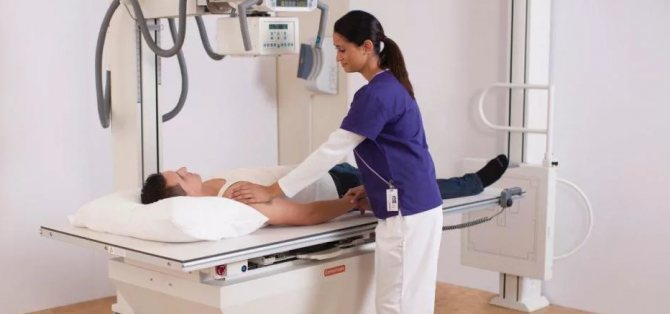
During the diagnostic process, the doctor refers the patient to the following studies:
- X-ray;
- laparoscopy;
- Ultrasound of the pelvic organs and peritoneum;
- blood chemistry;
- endoscopy.
If the doctor suspects the presence of a malignant tumor, the patient will be referred for additional examination, including a biopsy, CT and MRI. If there is a possibility of developing a pathology of the urinary system, the patient must have his urine tested.
Prevention
The appearance of lower back pain and diarrhea depends on the lifestyle a person leads. Poor diet and bad habits provoke both symptoms. Since disruption of the digestive system and kidney disease are common causes of diarrhea and lower back pain, preventive measures are aimed at reducing the risk of these abnormalities:
- The diet should include only fresh and high-quality foods with sufficient vitamin content;
- It is better to give up drinking alcohol and smoking forever;
- taking medications without a doctor’s prescription is prohibited;
- if a person has chronic pathologies, they should be gotten rid of urgently;
- Spoiled foods, toxins and parasites should not enter the body.
To avoid the development of inflammatory processes, especially when it comes to the female body, it is enough to avoid hypothermia and use a condom during sexual intercourse. Even if the patient has not complained of diarrhea, back pain or other abnormalities, it is necessary to undergo an examination every six months. This will help prevent diseases and treat them in time without surgery.
